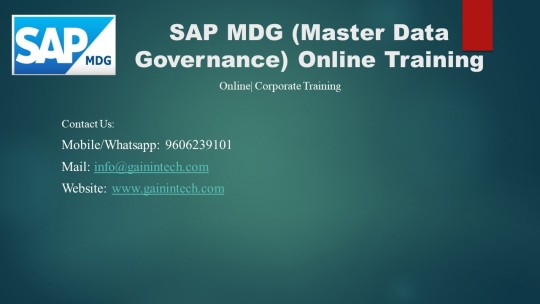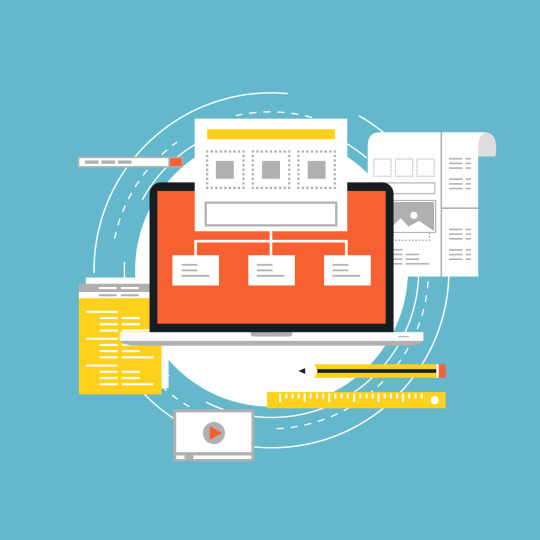#workflowmodel
Explore tagged Tumblr posts
Text
Workflow Engine Unleashed: Turbocharge Your Workflows
Building on the concept of workflow engines, this blog delves deeper into the subject, exploring how to truly unleash the importance of workflow engine to turbocharge your business processes.

Advanced Workflow Engine Features: We'll discuss advanced features and capabilities of workflow engines that can supercharge your workflows, such as conditional routing and dynamic task assignments.
Case Studies: Explore real-world case studies of organizations that have successfully implemented advanced workflow engines for remarkable results.
Customization and Integration: Discover how you can customize a workflow engine to fit your unique business needs and seamlessly integrate it with your existing software and systems.
Scalability and Efficiency: Learn how a well-implemented workflow engine can handle increased workloads and scale your processes efficiently.
Best Practices: We'll share best practices for harnessing the full potential of a workflow engine to achieve maximum efficiency.
youtube
SITES WE SUPPORT
Workflow Model KPIs – Wix
#workflowmodel#workflowengine#accountspayableworkflowprocess#recruitingkpis#preemploymentaccountingassessment#Youtube
0 notes
Text
Workflow Model Decoded: Your Path to Streamlined Success
In today's fast-paced world, a well-structured workflow model is the key to achieving streamlined success. Whether you're managing a project, running a business, or pursuing personal goals, understanding and optimizing your workflow can significantly enhance productivity and efficiency. In this comprehensive blog, we will decode the workflow model, uncover its components, and provide practical insights to help you design and implement an effective workflow for your endeavors.

Defining the Workflow Model: At its core, a workflow model is a visual representation of a process or series of tasks required to achieve a specific outcome. It outlines the sequence of steps, assigns responsibilities, and identifies critical inputs and outputs. A well-defined workflow model ensures consistency, reduces errors, and fosters seamless collaboration among team members.
Identifying Key Process Elements: Begin decoding your workflow model by identifying the key elements of your process. Break down the tasks, decisions, and actions required to accomplish the desired outcome. Understanding these elements will serve as a foundation for streamlining the workflow.
Mapping the Workflow: Once you have identified the process elements, create a visual map of the workflow. This can be done using flowcharts, swimlane diagrams, or process maps. Visualizing the workflow enables you to identify redundancies, inefficiencies, and potential bottlenecks.
Setting Clear Objectives and Goals: Every workflow model must be aligned with specific objectives and goals. Clearly define what you want to achieve and the measurable outcomes you aim to deliver. Well-defined goals provide direction and motivation for the entire team.
Establishing Roles and Responsibilities: Assign roles and responsibilities to team members based on their expertise and skills. Clearly define each person's contribution to the workflow, ensuring accountability and effective collaboration. When everyone knows their role, the workflow becomes more cohesive.
Implementing Workflow Automation: Workflow automation can significantly boost productivity by automating repetitive and rule-based tasks. Leverage automation tools and software to handle data entry, notifications, and document generation, freeing up human resources for more strategic activities.
Seamless Collaboration and Communication: Open and effective communication is the lifeblood of a successful workflow model. Encourage seamless collaboration among team members through regular meetings, project management tools, and communication platforms. Foster a culture of transparency and constructive feedback.
Integrating Technology Solutions: Embrace technology to optimize your workflow. Explore project management software, cloud storage solutions, and communication tools that streamline collaboration and ensure all necessary resources are readily available.
Continuous Monitoring and Improvement: A workflow model is a dynamic process that requires continuous monitoring and improvement. Regularly evaluate the workflow's performance, gather feedback from team members, and analyze data to identify areas for enhancement. Iteratively refine the workflow to achieve maximum efficiency.
Training and Skill Development: Invest in training and skill development for your team members to ensure they have the necessary expertise to handle their roles effectively. Well-trained and knowledgeable team members can contribute to a smoother workflow and improved overall outcomes.
youtube
Conclusion: Decoding the workflow model is the first step toward streamlined success in any endeavor. By understanding the process elements, mapping the workflow, and setting clear objectives, you can create a solid foundation for efficiency. Leveraging automation, embracing technology, and fostering collaboration will further optimize the workflow. Remember that continuous monitoring, feedback, and improvement are essential for maintaining peak performance. Armed with this knowledge, you are now equipped to design and implement an effective workflow model that leads you and your team towards streamlined success. Happy decoding and workflow refining!
SITES WE SUPPORT
Workflow Model Doc – Weebly
0 notes
Text
Using a Workflow Template For Google Docs
The workflow template for google docs is a useful tool to create an organized plan for projects or tasks. It can also help reduce the chance of errors in a process by outlining the steps and when they should be done. It can be used for a variety of purposes, including planning for new products or services, documenting the steps of an algorithm, and organizing thoughts and ideas.

A basic flow chart can be created with Google Docs by selecting the page setup as Landscape. You can then select the shapes you want to add to your chart and connect them using lines. Once you’re finished, you can save your chart as a PDF or PNG file. You can then use the file to share your chart with others.
Creating a simple process flowchart with Google Docs is easy. There are many templates available on the internet, from business processes to recruitment workflows. These templates can be easily adapted to fit your needs. You can also find some that come with infographic slides and PowerPoint shapes that are helpful in illustrating the process.
youtube
Using a template for creating workflows with Google Sheets can help you streamline processes and automate the task of capturing data. This workflow is a perfect example of this. The template is triggered by the Okta - User Suspended event and creates a report in Google Sheets that can be shared with stakeholders. This workflow is a great way to eliminate the manual process of reporting on events, while freeing up time to focus on other activities.
SITES WE SUPPORT
Business System Process – Wix
0 notes
Photo

Warm Greetings from Gain In Technology- Bangalore, IN. We are supporting SAP Real-Time Online Training with Industrial Experts who have min 8 yrs of experience. Find below to get more details about SAP MDG Training Module: SAP MDG (Master Data Governance) Duration: 25 to 30 hrs Batch : Depends on Consultant availability Meeting Software: GoToMeeting Materials: Daily Class recording, Trainer hands-on Document. Server Access: 3 Months We are starting a new batch on SAP MDG if you are interested and need to attend a demo please contact on below Mobile/Whatsapp: +91-9606239101 #training #onlinetraining #onlinecourse # #technology #data #sap #bangalore #India #hyderabad #pune #Chennai #datagovernance #masterdata #masterdatamanagement #sapmdg #mdg #datamodeling #UIModeling #workflowmodeling #datareplication #datamigration #bcsets
0 notes
Text
Streamlining Success: The Power of Workflow Models
Building on the earlier blog about mastering workflow models, this blog focuses on the significane of workflow models in streamlining business operations.

Recap of Workflow Models: We'll briefly recap what workflow models are and their significance.
Streamlining Processes: Learn how workflow models can help identify bottlenecks and inefficiencies in your business processes and how to address them.
Cost Reduction: Understand how streamlining with workflow models can lead to cost savings and improved resource allocation.
Scaling for Growth: Discover how workflow models can help businesses scale their operations efficiently.
Success Stories: We'll share success stories of organizations that have harnessed the power of workflow models for streamlined success.
youtube
SITES WE SUPPORT
Workflow Model KPIs – Wix
#workflowmodel#workflowengine#accountspayableworkflowprocess#recruitingkpis#preemploymentaccountingassessment#Youtube
0 notes
Text
Ace Your Accounting Job Interview: Pre-Employment Assessment Guide
Navigating an accounting job interview can be daunting, but with the right preparation, you can increase your chances of success. This blog provides an in-depth guide to help you ace your accounting job interview, including pre-employment accounting assessment.

Understanding Pre-Employment Assessments: We'll explain what pre-employment assessments are, why they're used, and what employers are looking for.
Common Accounting Assessments: Learn about the typical assessments used in accounting job interviews, such as accounting skills tests and behavioral assessments.
Preparation Tips: Get practical advice on how to prepare for these assessments, including improving your accounting skills, practicing sample questions, and managing your time.
Interview Strategies: Discover how to present yourself confidently during the interview and how to address assessment questions.
Soft Skills and Communication: We'll discuss the importance of soft skills and effective communication during your accounting job interview.
Real-Life Examples: Explore real-life scenarios and examples to better understand what to expect in accounting job interviews.
youtube
SITES WE SUPPORT
Workflow Model KPIs – Wix
#workflowmodel#workflowengine#accountspayableworkflowprocess#recruitingkpis#preemploymentaccountingassessment#Youtube
0 notes
Text
Decoding Success: The Key Recruiting KPIs You Need
Effective recruitment is the backbone of any successful organization. In this blog, we'll decode the key recruiting Key Performance Indicators (KPIs) that are essential for measuring and improving your recruiting processes.

Importance of Recruiting KPIs: Understand why tracking KPIs is crucial for the success of your recruitment efforts.
Top Recruiting KPIs: We'll discuss a range of KPIs, including time-to-fill, cost-per-hire, quality-of-hire, and more, and explain how to measure them.
Using Data for Improvement: Learn how to use the data from KPIs to refine your recruiting strategies and make data-driven decisions.
Measuring Candidate Experience: Explore how KPIs can also help assess the candidate experience and improve your employer brand.
Benchmarking and Comparisons: Discover how to benchmark your recruiting KPIs against industry standards and competitors.
Recruitment Technology: We'll discuss the role of technology in measuring and improving recruiting KPIs.
After reading this blog, you'll have a clear understanding of which KPIs to focus on and how to use them to enhance your organization's recruiting efforts.
youtube
SITES WE SUPPORT
Workflow Model KPIs – Wix
#workflowmodel#workflowengine#accountspayableworkflowprocess#recruitingkpis#preemploymentaccountingassessment#Youtube
0 notes
Text
Smooth Sailing: Mastering Your Accounts Payable Workflow Process
Managing accounts payable is a critical aspect of financial operations for any business. In this blog, we'll guide you through mastering the accounts payable workflow process for smooth and efficient financial management.

The Importance of Accounts Payable: Understand why managing accounts payable is vital for the financial health of your organization.
Key Components of AP Workflow: Learn about the essential elements of the accounts payable workflow, from invoice receipt to payment processing.
Automating AP Processes: Explore how automation can streamline accounts payable, reduce errors, and enhance transparency.
Best Practices: We'll share best practices for optimizing your accounts payable workflow process.
Technology and Software: Discover the software and tools available to simplify and improve your accounts payable workflow.
Case Studies: Gain insights from real-life examples of organizations that have achieved smooth sailing in their accounts payable processes.
youtube
SITES WE SUPPORT
Workflow Model KPIs – Wix
#workflowmodel#workflowengine#accountspayableworkflowprocess#recruitingkpis#preemploymentaccountingassessment#Youtube
0 notes
Text
Supercharge Your Processes with a Workflow Engine
A workflow engine is the powerhouse behind automating and optimizing your business processes. In this blog, we'll explore the transformative potential of workflow engines and how they can supercharge your organization's processes.

What Is a Workflow Engine?: We'll begin by defining what a workflow engine is and how it differs from manual processes.
Benefits of Workflow Engines: Delve into the advantages of using a workflow engine, such as increased speed, accuracy, and reduced operational costs.
Workflow Automation: Learn how a workflow engine automates repetitive tasks, reducing human error and freeing up valuable time.
Integration Capabilities: Discover how workflow engines can seamlessly integrate with other software and systems, creating a cohesive ecosystem for your organization.
Real-Life Examples: We'll provide real-world examples of businesses that have successfully supercharged their processes using workflow engines.
Choosing the Right Workflow Engine: Find guidance on selecting the right workflow engine for your specific needs.
With the insights from this blog, you'll be ready to harness the full potential of a workflow engine and take your organization's processes to the next level.
youtube
SITES WE SUPPORT
Workflow Model KPIs – Wix
#workflowmodel#workflowengine#accountspayableworkflowprocess#recruitingkpis#preemploymentaccountingassessment#Youtube
0 notes
Text
Mastering Workflow Models: A Comprehensive Guide
Workflow models are a fundamental concept in business process management, enabling organizations to streamline their operations and boost efficiency. This comprehensive guide will take you through the ins and outs of mastering workflow models.

Workflow models provide a visual representation of how tasks and processes flow within an organization. They help in defining, analyzing, and optimizing various processes, making them a crucial tool for businesses looking to improve their productivity. In this blog, we'll dive deep into the world of workflow models and cover the following:
Understanding Workflow Models: We'll start by explaining what workflow models are and why they are essential for businesses.
Types of Workflow Models: You'll learn about different types of workflow models, including linear, branched, and parallel workflows.
Benefits of Workflow Models: Discover how workflow models can lead to increased efficiency, reduced errors, and better resource allocation.
Creating Workflow Models: Step-by-step instructions on how to create and implement workflow models in your organization.
Tools and Software: Explore the various tools and software available for creating and managing workflow models.
Best Practices: We'll share expert tips and best practices for optimizing your workflow models.
By the end of this comprehensive guide, you'll have a firm grasp of workflow models and how to harness their power for your organization's success.
youtube
SITES WE SUPPORT
Workflow Model KPIs – Wix
#workflowmodel#workflowengine#accountspayableworkflowprocess#recruitingkpis#preemploymentaccountingassessment#Youtube
1 note
·
View note
Text
Google Docs Domination: A Productive Workflow Guide
Google Docs has revolutionized the way we create and collaborate on documents. Its cloud-based platform and powerful features make it an essential tool for individuals and teams seeking a productive and efficient workflow. In this comprehensive blog, we will delve into the depths of Google Docs and explore the tips, tricks, and hidden gems that will help you master this versatile application and achieve document domination.

Real-Time Collaboration: One of Google Docs' standout features is real-time collaboration. Multiple users can work on the same document simultaneously, making it ideal for team projects, brainstorming sessions, and feedback collection. Embrace this feature to harness the power of collaboration and boost productivity.
Synchronized Across Devices: Google Docs seamlessly syncs your documents across devices, allowing you to access and edit them from your computer, tablet, or smartphone. This synchronization ensures you can pick up where you left off, regardless of the device you're using, enabling flexible and remote work options.
Version History and Revision Control: The "Version history" feature in Google Docs enables you to view and restore previous versions of your document. This invaluable tool ensures that you never lose valuable content and can revert to earlier states if needed. Utilize this feature for added peace of mind and collaboration control.
Explore and Research Tools: Google Docs integrates "Explore," a smart research tool that allows you to search the web, images, and scholarly articles without leaving the document. This functionality facilitates fact-checking, citation gathering, and in-depth research right within the document editor.
Voice Typing and Dictation: Save time and effort by using Google Docs' built-in voice typing feature. Activate "Voice typing" from the "Tools" menu, and start dictating your content directly into the document. It supports various languages and can be an excellent accessibility feature for users with typing limitations.
Templates for Quick Document Creation: Google Docs offers a plethora of templates for resumes, letters, reports, and more. These pre-designed templates can serve as a starting point, sparing you the effort of creating documents from scratch. Customize them to your needs and expedite your workflow significantly.
Keyboard Shortcuts: Mastering keyboard shortcuts can transform your editing speed. Learn essential shortcuts like Ctrl/Cmd+C for copy, Ctrl/Cmd+V for paste, and Ctrl/Cmd+B for bold text. Familiarize yourself with more shortcuts to navigate, format, and edit your documents with lightning speed.
Add-ons for Enhanced Functionality: Explore the Google Workspace Marketplace for a wide range of add-ons that enhance Google Docs' capabilities. Add-ons like Grammarly for spell-checking and editing support, Lucidchart for diagrams, and Table of Contents for better organization can optimize your workflow.
Offline Access and Google Drive Integration: Enable offline access to your Google Docs from the settings to keep working even without an internet connection. The changes you make will sync once you reconnect. Additionally, leverage the integration with Google Drive to store, organize, and access your documents efficiently.
Custom Styles and Formatting: Create and save custom styles for consistent formatting throughout your document. Utilize headings, subheadings, and paragraph styles to structure your content logically. Custom styles ensure a professional and polished look to your documents.
youtube
Conclusion: Google Docs is more than just a word processor; it's a powerful platform that can revolutionize your workflow. With real-time collaboration, research tools, voice typing, and version history, you can work seamlessly with others and ensure your documents are well-researched and refined. Add-ons, templates, and keyboard shortcuts are your allies in streamlining the process and saving valuable time. With this guide in hand, you are now equipped to dominate your documents and boost productivity with Google Docs. Happy writing and collaborating!
SITES WE SUPPORT
Workflow Model Doc – Weebly
0 notes
Text
Solving the Puzzle: Innovative Workflow Solutions Unveiled
In today's fast-paced and ever-changing world, businesses and individuals alike are constantly seeking innovative solutions to streamline their workflows. A well-optimized workflow not only enhances productivity but also fosters creativity and reduces stress. In this blog, we will explore some cutting-edge workflow solutions and technologies that can help you solve the puzzle of efficiency and unlock new levels of productivity.

Agile Methodology: Agile methodology is a project management approach that emphasizes flexibility and collaboration. It breaks down tasks into smaller, manageable iterations called sprints, allowing teams to adapt quickly to changing requirements. Agile fosters regular communication between team members and stakeholders, ensuring that everyone is aligned with the project's goals.
Kanban Boards: Kanban is a visual management tool that enables teams to track their work progress efficiently. By dividing tasks into cards on a virtual or physical board, teams can easily visualize the workflow, identify bottlenecks, and allocate resources effectively. Popular digital platforms like Trello and Asana offer powerful Kanban board functionalities.
Robotic Process Automation (RPA): Robotic Process Automation involves using software robots to automate repetitive and rule-based tasks. RPA can handle data entry, data manipulation, and other mundane activities, freeing up human resources to focus on more strategic and creative aspects of the workflow.
Artificial Intelligence (AI) Integration: AI can be integrated into workflows to enhance decision-making and automate complex processes. AI-powered chatbots can assist with customer support, natural language processing (NLP) can analyze unstructured data, and predictive analytics can anticipate future trends, all contributing to a more efficient workflow.
Cloud-based Collaboration: Cloud-based collaboration tools like Google Workspace, Microsoft 365, and Slack facilitate seamless teamwork, allowing team members to work on documents simultaneously, exchange ideas, and stay updated on project progress. Cloud storage ensures data accessibility from anywhere, promoting remote work flexibility.
Internet of Things (IoT) Optimization: In industries like manufacturing and logistics, IoT devices can optimize workflows by collecting real-time data and providing insights for process improvement. IoT-enabled sensors, RFID tags, and smart devices help monitor inventory, track shipments, and streamline operations.
Workflow Analytics and Insights: Gaining a deep understanding of your workflow's performance is crucial for improvement. Workflow analytics tools provide data-driven insights, highlighting areas of inefficiency and identifying potential optimizations. Analyzing this data empowers decision-makers to make informed changes and streamline operations.
Unified Task Management: Integrating various task management tools into a unified platform simplifies the workflow and reduces cognitive load. Platforms like Monday.com and Wrike offer a central dashboard to track tasks, deadlines, and dependencies, promoting seamless collaboration across projects.
Gamification for Productivity: Gamification techniques can boost motivation and engagement in the workflow. By implementing reward systems, progress tracking, and friendly competitions, teams can feel more energized and focused, driving them towards increased productivity.
Continuous Learning and Upskilling: Investing in continuous learning and upskilling initiatives helps team members stay updated with the latest tools and technologies. Training programs and workshops foster a culture of innovation and ensure that the workforce remains equipped to handle new challenges.
youtube
Conclusion: Innovative workflow solutions are the missing pieces to solve the puzzle of efficiency and productivity. By adopting Agile methodologies, leveraging AI and RPA, integrating IoT, and utilizing cloud-based collaboration tools, businesses can optimize their workflows like never before. With data-driven insights, gamification, and continuous learning, teams can stay motivated, adaptable, and ahead of the curve. Embrace these innovative solutions, and watch your workflow transform into a well-orchestrated masterpiece, driving your success to new heights. Happy workflow optimizing!
SITES WE SUPPORT
Workflow Model Doc – Weebly
0 notes
Text
The Symphony of Efficiency: Unraveling the Workflow Model
Efficiency is the key to success in any endeavor. Whether you're managing a project, running a business, or even organizing your personal life, having an effective workflow model can make a world of difference. In this blog, we will explore the online workflow model platform, its importance, and how you can design and implement an efficient workflow to orchestrate your tasks harmoniously.

Understanding the Workflow Model: A workflow model represents the step-by-step process of completing a task or project. It outlines the sequence of activities, the roles of individuals involved, and the tools or resources required at each stage. By having a clear and structured workflow, you can eliminate confusion, reduce inefficiencies, and achieve optimal results.
Identifying Goals and Objectives: Before designing a workflow, it's essential to define your goals and objectives. Clearly outline what you want to achieve, the desired outcomes, and the timeline for completion. Having a well-defined purpose will guide your workflow design and keep everyone aligned with the overarching mission.
Mapping the Workflow: Start by mapping out the entire workflow on paper or using digital tools. Break down the process into individual tasks and identify the logical sequence in which they should be completed. Consider dependencies between tasks and potential bottlenecks that may hinder progress.
Role Assignments and Responsibilities: Assign roles and responsibilities to individuals based on their strengths, skills, and expertise. Clearly communicate each person's role in the workflow and establish accountability for their assigned tasks. When everyone knows their responsibilities, collaboration becomes more effective.
Streamlining with Automation: Automation plays a crucial role in enhancing efficiency. Identify tasks that can be automated using tools like project management software, workflow automation platforms, or artificial intelligence. Automating repetitive and time-consuming tasks frees up valuable resources for more critical activities.
Embracing Technology: Leverage technology to optimize your workflow model further. Use communication and collaboration tools to keep the team connected, cloud storage to store and access files from anywhere, and analytics tools to track progress and identify areas for improvement.
Continuous Improvement: A truly efficient workflow model is not static; it evolves with time and experience. Encourage feedback from team members and stakeholders to identify bottlenecks and inefficiencies. Regularly review and update the workflow to adapt to changing circumstances and improve overall efficiency.
Managing Time Effectively: Time management is the backbone of any efficient workflow. Encourage time-blocking techniques, set realistic deadlines, and prioritize tasks based on their importance and urgency. Eliminate distractions and create a focused work environment to maximize productivity.
Collaboration and Communication: Effective communication is vital for a successful workflow model. Foster a culture of open communication and encourage team members to share ideas, concerns, and progress updates. Utilize collaboration tools to centralize discussions and keep everyone informed.
Monitoring and Analytics: Implement a system to monitor the workflow's performance using analytics and key performance indicators (KPIs). Analyze data regularly to identify patterns, measure success, and make data-driven decisions to optimize your workflow continually.
youtube
Conclusion: The symphony of efficiency lies in designing and implementing a well-structured workflow model. By understanding the workflow's components, leveraging technology, embracing automation, and fostering collaboration, you can create a harmonious and highly productive workflow. Continuous improvement, effective time management, and data-driven decision-making will help you fine-tune your workflow and achieve optimal efficiency in all your endeavors. So, unravel the secrets of an efficient workflow model and conduct your tasks with precision and grace. Happy orchestrating!
SITES WE SUPPORT
Workflow Model Doc – Weebly
0 notes
Text
Efficiency Unleashed: Mastering Your Google Docs Workflow
Google Docs has become an indispensable tool for professionals, students, and anyone seeking a seamless and efficient way to create, collaborate, and manage documents. By mastering your Google Docs workflow, you can unlock a world of productivity and streamline your work processes. In this blog, we will delve into in-depth facts and valuable tips to supercharge your Google Docs experience.

Google Docs Basics: Let's start with the fundamentals. Google Docs is a web-based word processor that allows users to create, edit, and store documents online. It offers real-time collaboration, auto-saving, and compatibility with various devices, making it a powerful and accessible tool for all.
Keyboard Shortcuts: One of the quickest ways to enhance your efficiency is by utilizing keyboard shortcuts. Learn some essential shortcuts like Ctrl/Cmd+C for copy, Ctrl/Cmd+V for paste, and Ctrl/Cmd+B for bold. Mastering these shortcuts can save you significant time and effort.
Voice Typing: Did you know Google Docs offers a built-in voice typing feature? By clicking on "Tools" and selecting "Voice typing," you can dictate your content directly into the document. This can be a game-changer for those who prefer speaking rather than typing.
Templates and Add-ons: Google Docs provides a plethora of templates for resumes, letters, reports, and more. These templates can serve as a starting point, saving you from designing documents from scratch. Additionally, explore various add-ons available in the G Suite Marketplace, such as Grammarly for spell-check and editing support.
Version History: Embrace the version history feature in Google Docs to keep track of changes and revert to previous versions if needed. This allows you to collaborate with others confidently, knowing that you can always restore the document to a specific state.
Table of Contents: For lengthy documents, organizing content becomes crucial. By using the "Insert" menu and selecting "Table of contents," Google Docs will automatically create a linked table of contents based on your headings. This makes navigation through the document a breeze.
Collaboration and Comments: Invite others to collaborate on your document by clicking the "Share" button and entering their email addresses. They can edit, comment, or view the document based on the permissions you grant. Utilize comments to leave feedback, ask questions, or discuss specific sections.
Research Tools: Google Docs offers built-in research tools that allow you to search the web and find relevant content without leaving your document. Under the "Tools" menu, click "Explore" to access this powerful feature and insert citations effortlessly.
Offline Access: Don't let a lack of internet connection hinder your productivity. Enable offline access in Google Docs settings, and you can continue editing and creating documents even when offline. Once you reconnect, all changes will automatically sync.
Advanced Features: Delve deeper into Google Docs' advanced features like custom styles, advanced find and replace, and document organization using folders. These features can significantly enhance your workflow if you take the time to learn and incorporate them into your routine.
youtube
Conclusion: Mastering your Google Docs workflow opens the door to unparalleled efficiency and productivity. By utilizing keyboard shortcuts, templates, voice typing, and collaboration tools, you can streamline your work processes and focus on what truly matters. With these in-depth facts and tips, you're ready to unleash the full potential of Google Docs and take your productivity to new heights. Happy writing!
SITES WE SUPPORT
Workflow Model Doc – Weebly
1 note
·
View note
Text
Workflow Modeling Software
Workflow modeling software is a powerful tool that helps companies analyze and improve their procedures. It helps to visualize the entire process, making it easier for stakeholders to understand its flow and structure. This, in turn, can help identify inefficient task sequences and areas for process improvement.

Workflow models are also a great way to communicate the expected responsibilities of each team member at every step of the process. This helps to reduce the back-and-forth communication that can slow down the workflow. It can also help reduce mistakes and delays by standardizing procedures and reducing knowledge gaps.
A workflow model can be described as a set of tasks with preconditions and postconditions. It can also be described as a graph, where each node represents a task and each edge a transition between the current state and the goal state. A typical workflow modeling language is a flowchart and supports constructs such as choice, the classical fork and join, and iterative execution.
youtube
When looking for workflow modeling software, look for a solution that offers flexible, customizable dashboards and reporting capabilities. This will give company leadership, project managers, and other key stakeholders a clear picture of how the workflow is progressing in real time. It will also enable you to track and measure KPIs in the most effective way possible. This will allow you to take the right actions to ensure that your workflow is running smoothly and optimally. Look for a system that allows you to facilitate workflows for external stakeholders like vendors and customers with forms and customer portals. This will make it easy for them to submit new requests and be routed appropriately.
SITES WE SUPPORT
Business System Process – Wix
0 notes
Text
The Agile Workflow Model
The agile workflow model helps teams collaborate more effectively and efficiently, while providing visibility into project tasks. Its underlying principles focus on customer value and the rapid iteration of products. Agile workflows are flexible, allowing teams to adjust and change the process according to business needs and priorities. In addition, they prioritize collaboration and self-organizing teams rather than strict hierarchy.

Agile workflows vary in implementation and methodology, with many popular options including Scrum, Kanban, eXtreme Programming (XP), Dynamic System Development Method, Feature Driven Development and Adaptive Software Development. Each has its own advantages and disadvantages, and some enterprises may use different variants of agile processes in tandem.
Regardless of the methodology chosen, an agile project workflow should start with breaking down large projects into smaller sections. This allows the team to deliver on time and reduce the risk of scope changes during execution. The workflow should also include a sprint backlog, with each team focusing on delivering their task within the set timeframe.
Sprint teams can collaborate with the product owner and project manager to determine their sprint goals. They can also review the sprint backlog and any unfinished work from previous iterations. In addition, the project managers should arrange regular sprint review meetings with customers and stakeholders to gather feedback.
youtube
During the iteration phase, the product development team will take on the first sprint's tasks, working with the UI/UX team to combine the product requirements and user feedback into design codes. Once the work is completed, it will undergo QA testing to ensure that it meets quality standards. This is a critical step in the agile workflow, as it demonstrates that the product will meet user expectations. It also shows that the workflow is delivering value to customers.
SITES WE SUPPORT
Business System Process – Wix
1 note
·
View note